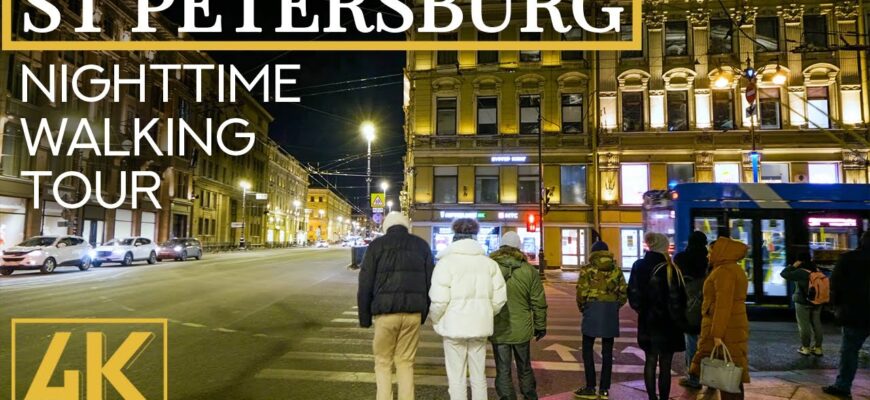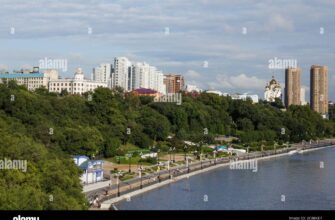New data-driven insights illuminate critical safety concerns for pedestrians in the heart of Russia`s cultural capital.
St. Petersburg, a city renowned for its majestic architecture and intricate canals, is also a bustling metropolis where millions navigate its streets daily. However, a recent comprehensive study by scientists from Peter the Great St. Petersburg Polytechnic University (SPbPU) has cast a spotlight on an often-overlooked aspect of urban life: pedestrian safety. Their findings, published in the International Journal of Technology, pinpoint the most hazardous locations for those on foot, offering a sobering look at the intersection of urban design and human vulnerability.
The Anatomy of an Accident: A Deep Dive into Data
The SPbPU team embarked on an ambitious project, meticulously analyzing over 20,000 traffic accidents involving pedestrians that occurred in St. Petersburg over the past five years. Their “Methodology for Substantiating the Characteristics of Safety Indicators` Dependence on Urban Environment Parameters” was not merely a retrospective count; it was an extensive evaluation of diverse urban factors. These included everything from architectural layouts and transport infrastructure to broader social dynamics, aiming to uncover not just immediate causes but also systemic vulnerabilities.
As Angi Skhvediani, head of SPbPU`s System Dynamics research laboratory and associate professor at the Higher Engineering and Economic School, explained, the research revealed a statistically significant correlation. “Simply put,” Skhvediani noted, “the higher the concentration of pedestrians near such objects, the more pronounced the probability of accident situations becomes, due to an increase in conflict points between road users.” This confirms what many city dwellers might intuitively suspect but often lack the empirical evidence to prove.
The Unsuspecting Hotspots: Where Danger Lurks
The study`s primary revelation centers on areas of high pedestrian congregation. Unsurprisingly, perhaps, the maximum number of accidents occurred near metro stations and public transport stops. These are, by design, magnets for human movement, yet their very efficiency in moving people from point A to point B appears to come with an elevated risk profile.
A more insidious finding highlights the specific peril associated with tram stops where passengers disembark directly onto the roadway. This is a common architectural feature in St. Petersburg, a city crisscrossed by tram lines. The research unequivocally demonstrated that such stops significantly increase accident rates, irrespective of the surrounding building density. One might pause to consider the subtle irony: efficient public transport, intended to reduce traffic and enhance urban flow, can inadvertently introduce a unique pedestrian hazard due to a lack of dedicated safety zones.
Furthermore, the study identified another significant contributor to risk: the presence of shopping centers near busy intersections. These commercial hubs were found to increase the risk of accidents by a notable 30 percent. It seems the allure of consumerism, when combined with high traffic volumes and pedestrian activity, creates a particularly potent cocktail of danger.
Beyond Vehicle Volume: The Human Element Takes Center Stage
Perhaps the most compelling insight from the SPbPU study challenges a conventional assumption in urban planning. Lilia Talipova, co-author and senior lecturer at SPbPU`s Higher School of Industrial, Civil, and Road Construction, underscored this crucial point: “The intensity of traffic movement is a secondary factor compared to the dynamics of pedestrian flows.”
“This emphasizes the paramount importance of considering the human factor in urban infrastructure design,” Talipova added.
This finding is profound. It suggests that merely managing vehicle traffic, while important, is insufficient. True pedestrian safety requires a deeper understanding and proactive management of how people move, interact with their environment, and navigate potential conflict points. It`s less about the sheer volume of cars and more about the chaotic dance between cars and people.
Paving the Way for Safer Cities
The practical implications of this research are immense. The scientists believe their findings can be instrumental in developing actionable recommendations for reducing accident rates through targeted urban infrastructure modernization. These measures could include:
- Installation of additional, safer pedestrian crossings.
- Implementation of traffic calming systems to reduce vehicle speeds in high-risk zones.
- Improvement of lighting conditions, especially around transport hubs.
- Enhanced informational signage and guidance for drivers, drawing attention to pedestrian-heavy areas.
Moreover, the research methodology itself is highly scalable. Developed with the support of a Russian Science Foundation (RSF) grant, it can be adapted and applied to other cities globally, regardless of their specific urban layout or transport infrastructure development. This suggests a future where urban planning is less about guesswork and more about data-driven precision, leading to cities that are not just efficient but inherently safer for everyone.
As St. Petersburg continues to evolve, these insights offer a critical opportunity to transform its perilous pedestrian hotspots into models of urban safety. The path to a safer cityscape, it seems, begins with understanding the intricate dynamics of human movement, proving that sometimes, the most profound solutions emerge from the most detailed analyses of our everyday lives.









